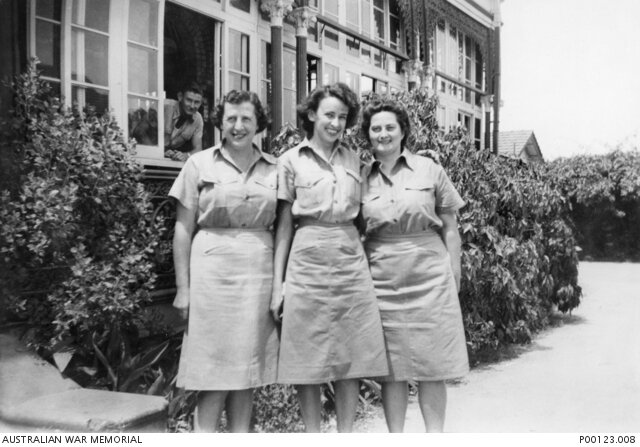Put Out into the Deep

An audio thriller about a group of young Australian AWAS girls who intercepted for Douglas MacArthur’s secret Intelligence organisation in Brisbane, Central Bureau. Gradually, one of them becomes convinced there’s a threat right on the doorstep – just out in the Bay – but it’s elusive…
By early 1942, the Japanese had attacked Pearl Harbour and bombed Darwin: the Australian Home Front war effort was “All In!” – Manpower had the right to direct the nation’s workforce to essential services and control pay and conditions, war bond drives were filled enthusiastically, the majority of the AIF was still returning from European and Middle Eastern theatres whilst the rapid Japanese advance south through New Guinea seemed unstoppable… The call went out to Australia’s women to serve their country – and ‘the girls’ responded in droves. They joined the Land Army, herded cattle, ploughed land, grew and harvested crops; they manned anti-aircraft guns and searchlights, staffed munitions and uniform factories, they joined medical services and took over as telegraphists, truck, tram, ambulance and bus drivers, rode motorcycles as military couriers and, amongst many more things, they worked for Central Bureau – often as AWAS, WRAN or WAAAF interceptors. Central Bureau was MacArthur’s Ultra-secret, Inter-Allied Intelligence organisation, charged with the interception, analysis and decoding of encrypted Japanese signals – and from mid-1942 it operated out of 21 Henry Street, Ascot, Brisbane.
For these young AWAS (Australian Women’s Army Service) women, working for Central Bureau meant searching out Japanese radio frequencies, intercepting coded enemy signals, knowing katakana (Japanese morse), and scribbling wildly in pencil on the receiver sheets – often in shifts of 4 or 6 hours, without a break. The work required enormous focus, quick wits, patience and an ability to cut through ‘static’ whilst listening (busy frequencies were full of overlapping messages, different volumes, rapid changes of frequency on the enemy’s part). Experienced interceptors could identify the sound of a particular wireless set and the ‘fist’ or particular style of individual Japanese senders – so, if frequencies changed, they could search the airwaves looking for the new one – then Direction Finding could locate that unit’s new position – and, from this, traffic analysis and/or Y sections (Intelligence) knew, or could posit, the enemy’s movements. But the capacity and role of interception, traffic analysis and code-breaking is not widely-known Australian wartime history as most research material remained classified until the last couple of decades (and then what was released from overseas sources focused on the role of US and British signals) so this story and their contribution remains largely unknown in our history.
These young women lived away from home in barracks, were moved around the country, were unable to talk about what they did as they were bound by the Official Secrets Act, lied to family and friends, and experienced a sense of purpose and solidarity with ‘the boys’ that had them determined to leave nothing unheard, nothing lost in the vast spider’s web of criss-crossing radio signals. That message could be a weather report – a signal that tells Traffic there’s an air attack on Darwin in 4 hours. These young women contributed significantly, and in silence, to the war effort and Assembly of Elephants is so happy to have the opportunity to recognise that contribution. This is a story that should be a part of our national ‘story-telling’.
Elaine Acworth was awarded a QANZAC 100 Digital Fellowship in 2018-19 from the State Library of Queensland to research and write this audio work and is producing the recording at the end of 2020, with sound design and direction by Guy Webster. Some of Queensland’s best actors and voice artists will be recording the drama and asking all of the questions great actors ask…
So, stay tuned for recording dates – they’re coming.
Put Out into the Deep Series 1 will be hosted on State Library of Queensland’s website and freely available for download or streaming. It will be part of a series of audio works, both fictional and ‘true crime’, set in Brisbane in WW2 and examining the life and times of the city and its people in those crucial wartime years when so much happened –and so much changed.
The AWAS girls lived and worked at Kalinga Base Camp – both a residential camp and an intercept station.
The local history group has done a wonderful job of collecting images and information and piecing the puzzle together.
http://www.chermsidedistrict.org.au/01_cms/details.asp?ID=391#2808
The research and writing of Put Out into the Deep was funded by QANZAC 100: Memories for a New Generation, a project proudly supported by the Queensland Government and State Library of Queensland.

